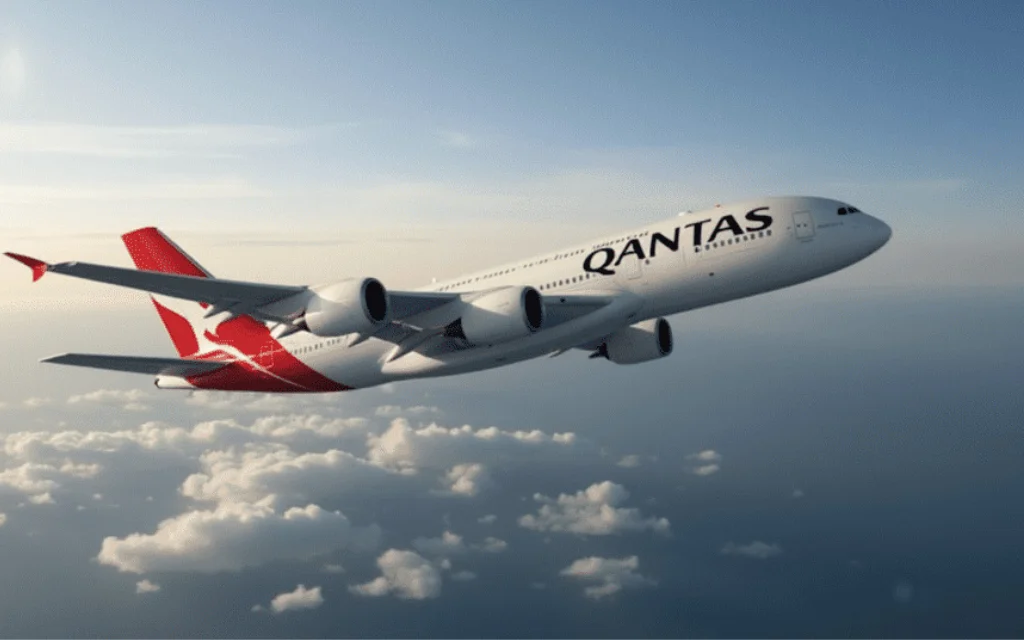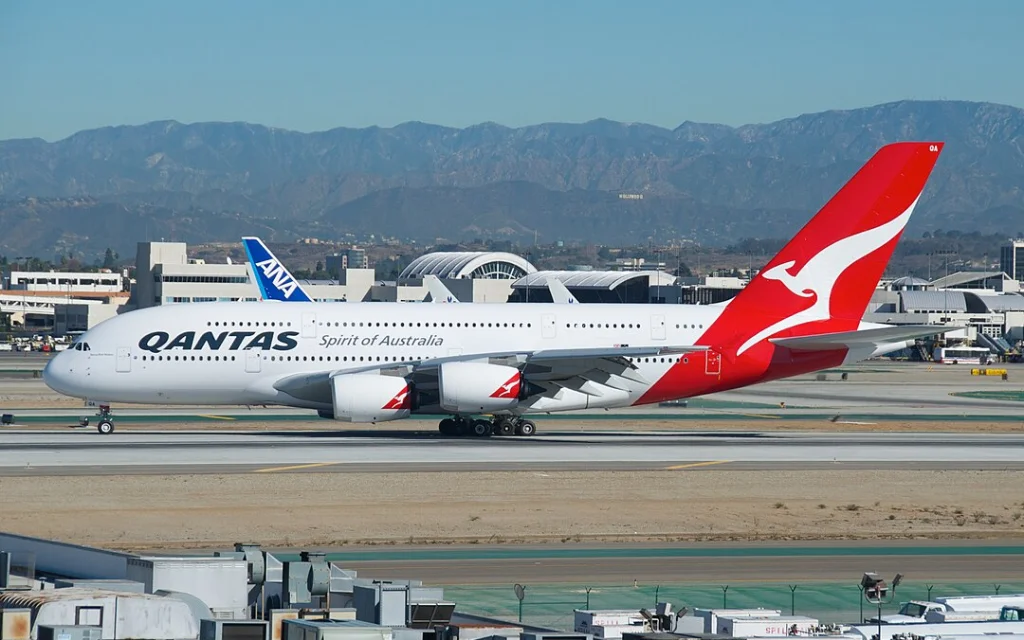Thousands of Australians were left frustrated this week as Qantas A380 Singapore delays continued to disrupt travel plans. What began as a routine Sydney–Singapore flight quickly spiralled into a multi-day ordeal due to mechanical issues and operational setbacks. Here’s an in-depth look at what happened, how passengers coped, and what this means for the world’s biggest superjumbo aircraft.
Mechanical Failures Halt Qantas A380 Singapore Departure
The disruption started on July 14 when Qantas A380 Singapore delays hit flight QF82, scheduled to depart Changi Airport at 8:45 PM. Passengers were initially held on board before being asked to disembark around midnight. By 2:30 AM, the flight was officially cancelled as engineers discovered complex mechanical problems requiring significant repair time (theaustralian.com.au, aviationa2z.com).
Qantas confirmed the A380 needed “extended maintenance,” with engineers dispatched and parts on order. The backup flight, scheduled for early Wednesday, was delayed multiple times. Passengers were eventually told of a new flight time: 12:30 AM Thursday—almost three days after their original departure (aviationa2z.com).
Fleet Disruptions Compound Delays
This was no isolated incident. An aerobridge accident in Sydney damaged another Qantas A380’s engine, forcing the grounding of yet another superjumbo (aviationa2z.com). As a result, flights QF2 and QF81 from Singapore were also impacted—QF2 postponed and QF81 delayed by nearly six hours (aviationa2z.com).
With ten A380s in service—and two more in storage—Qantas was left short of spare aircraft. The accumulation of one plane grounded in Sydney and another stranded in Singapore magnified the impact across multiple long-haul routes (aviationa2z.com).
Passenger Frustration Grows Amid Rebooking Challenges
Stranded travellers voiced frustration over repeated rescheduling, costly delays, and insufficient communication. Families with school-aged children, business travellers, and those with holiday plans voiced concerns online and in media forums.
Qantas offered hotel accommodations, meal vouchers, and expense reimbursements. Despite this, many passengers reported feeling anxious and uncertain, citing missed connections and limited alternatives. Some flights resembled “holding patterns” in the terminal as passengers awaited another update.

Qantas Crisis Response Under Spotlight
Qantas responded by deploying engineer teams and planning a replacement A380 to depart Singapore late on July 16 (aviationa2z.com, malaymail.com). CEO statements emphasised safety over speed and transparency in explaining delays to affected customers.
The airline also cited its ranking as the world’s second safest full-service carrier, urging passengers to trust the process. Qantas reaffirmed its plans to continue flying A380s until 2032, despite the technical challenges of maintaining ageing aircraft (aviationa2z.com).
Diagnosing the Qantas A380 Singapore Delays Root Causes
A380 Age and Maintenance Load
Qantas’ fleet of Airbus A380s, while iconic and popular among long-haul flyers, is also aging. These aircraft were delivered between 2008 and 2011, making them over a decade old. The A380 is a complex aircraft with unique maintenance demands due to its size, weight, and technical systems. As planes age, more frequent inspections and component replacements are necessary. In this case, delayed detection of mechanical wear or faulty components likely led to extended downtime.
The reported mechanical issues—linked to the hydraulic system and one of the four Rolls-Royce Trent 900 engines—posed serious safety risks. Engineers required time to source replacement components and perform rigorous safety checks. This comprehensive repair process meant further delays and limited aircraft availability, especially as specific A380 parts are not always stocked in overseas airports.
Ripple Effects Across Fleet
The delay of even a single A380 has a wide ripple effect. With limited aircraft in the fleet and few equivalent replacements, schedules across the Qantas international network were reshuffled. Not only were Sydney–Singapore–London passengers affected, but downstream flights—such as QF1 and QF10—also experienced reshuffles, leading to gate reassignments and changes in crew rosters.
Moreover, long-haul routes require specially trained A380 flight crews. The absence of available personnel due to the unplanned grounding meant delays weren’t just about the plane—it was about getting the right crew ready and positioned. Operational gaps increased as Qantas juggled simultaneous disruptions in two international hubs: Singapore and Sydney.
Tarmac Holdover and Crew Disruptions
The extended tarmac time before the initial cancellation created a domino effect for both passengers and crew. Australia’s Civil Aviation Safety Authority (CASA) and Singapore’s aviation authorities impose strict limits on how long crews can work before mandatory rest. With those limits exceeded during the wait, Qantas had to locate a replacement crew already rested and legally available to fly.
Because crew rotations are tightly scheduled, finding a fully qualified A380 crew in Singapore posed significant logistical issues. The complexity was magnified by visa restrictions, union regulations, and limited crew accommodation capacity. It wasn’t just about waiting for a plane—it was about orchestrating an entire shift of airline operations to resume flights safely and legally.
Booking Consistency and Compensation
One overlooked complication was the inconsistency in passenger itineraries. Travellers who used travel aggregators or split bookings across multiple airlines found themselves excluded from automatic rebooking systems. This forced manual intervention from Qantas agents—already overwhelmed by the high volume of calls and online messages.
In some cases, passengers resorted to booking one-way flights with other airlines at their own expense. While Qantas has committed to reimbursing “reasonable costs,” passengers reported delays and ambiguity in claims processing. Others highlighted the difference in treatment between Economy and Business class ticket holders, raising concerns about equity in crisis response.
What It Means for Australian Travellers
Extended Layovers in Singapore
Many Australians flying back from Europe or Asia via Singapore found themselves stranded for up to three days. In some cases, Qantas arranged hotel accommodation, but these were limited and sometimes required long queues or additional booking coordination. The uncertainty of flight times made it difficult for travellers to plan daily activities or manage work and family commitments back home.
The situation was especially challenging for families with children, elderly passengers, and business travellers with fixed schedules. For many, the prospect of an extended layover with no clear end created emotional and logistical distress.
Travel Insurance & Coverage Issues
The Qantas A380 Singapore delays highlighted how dependent travellers are on robust travel insurance. While Qantas covered hotel and meals in many cases, some travellers were forced to dip into personal funds for extra expenses. Those without comprehensive policies found it harder to claim for lost connections or travel-related stress. The incident has triggered a spike in Australians reviewing and upgrading their travel insurance plans to ensure better protection.
Additionally, the delays exposed inconsistencies in coverage—especially around ‘delay compensation,’ ‘trip interruption,’ and ‘alternate travel arrangements.’ Passengers booking flights independently through third-party websites were especially vulnerable to gaps in coverage.
Loyalty Programme Turbulence
Frequent flyers were also impacted, particularly those using Qantas Points for award travel. Delays and rebookings disrupted not only their schedules but their points accrual and status benefits. In some cases, passengers reported being rebooked onto alternative carriers without lounge access or frequent flyer perks. Qantas has yet to clarify how points and status credits will be handled in light of these disruptions, prompting calls for more transparency.
For many loyal customers, this experience has been a test of the brand’s commitment to service—especially as other international airlines improve their own long-haul experiences.
Qantas Response & Future Plans
Fleet Upgrades
Qantas continues to retrofit selected aircraft, including A380s, with Wi-Fi and newer systems Aviation A2ZTravel And Tour World+15News.com.au+15Wikipedia+15. These technical improvements align with overall operational resilience.
Maintenance Reminders
Increased mechanical checks and earlier servicing are being prioritised for remaining A380s dedicated to Singapore and Sydney routes.
Communication Improvements
Qantas indicates it will enhance real-time updates via mobile and email to keep passengers informed during incidents like Qantas A380 Singapore delays.
Safety Records and Industry Perspective
Despite recent setbacks, A380s have a stellar safety profile. Notably, Qantas Flight 32 suffered a catastrophic engine failure in 2010 but landed safely in Singapore—setting a benchmark in aviation safety Travel And Tour WorldNews.com.au+4The Australian+4Wikipedia+4Wikipedia+3Medium+3Wikipedia+3.
Other carriers, including Emirates and Singapore Airlines, successfully operate A380s on ultra-long-haul routes. Qantas aims to follow similar safety and reliability standards Business Insider.
Conclusion: Navigating Qantas A380 Singapore Delays
The Qantas A380 Singapore delays serve as a reminder that even top-tier airlines face mechanical unpredictability. As Qantas works to restore normal service, passengers are urged to:
- Book all transit legs together
- Confirm travel insurance coverage
- Stay alert to real-time updates
- Explore alternative flights if urgent
Despite frustration, Qantas commits to transparency and customer care. For Australians, this incident is a case study in travel preparedness—especially in the age of superjumbo airliners and high-stakes international routes.
Read another story about Machine Learning in Australia
Sources
- AviationA2Z – “Qantas A380 Flight Passengers Remain Stranded in Singapore for Days” reddit.comAviation A2Z+1facebook.com+1
- Malay Mail – “Mechanical issues leave Qantas passengers stranded in Singapore” Aero News Journal+2Malay Mail+2Yahoo News Malaysia+2
- e.vnExpress – “Hundreds stranded for days in Singapore…” VnExpress International
- TravelAndTourWorld – “Qantas Chaos: Passengers Stranded For Days…” Travel And Tour World+1Travel And Tour World+1
- Reddit – r/QantasAirways – flight delay discussion reddit.com
- news.com.au – free Wi-Fi rollout and aircraft upgrades News.com.au
- Business Insider & Wikipedia – A380 usage and operators Wikipedia+1Wikipedia+1
- Wikipedia – Qantas Flight 32 incident






